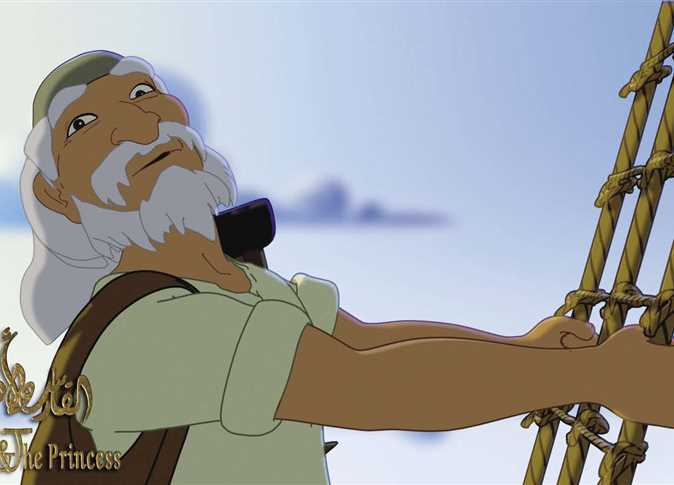Soviet Bloc animation is famous for its visual experimentation, and on Sunday evening, the Visegrad Film Festival – hosted by downtown’s Rawabet Theater and the Czech Embassy in Cairo – illuminated this corner of film history. For three days, the Visegrad Film Festival will be showing a selection of Slovak, Czech, Hungarian and Polish films from the 1960s to the present.
The festival kicked off Sunday evening with Slovak and Czech animated shorts, offering an exciting opportunity to not only see some Soviet-era animations, but also see the lasting influence of stylistic experimentation on film in the region. Viewers were able to trace a transformation in animated films that earlier camouflaged political statements in short films for children to the more recent trend that brings political agendas to the fore.
“Earth” (1966) and “Dita on the Front” (1969) by Slovak director Viktor Kubal address the difficulties of modernization and the absurdity of war. Stylistically, Kubal’s animations set the tone for the evening. His characters move across a two-dimensional painted background. A field is represented by a green splotch of color; red and yellow splotches make a room. For Kubal, expanding the expressive possibilities of simple elements is more important than realistic representation.
While the subject matter of both films is somewhat serious, with Kubal subtly and playfully rolling in politics, the films wouldn’t be out of place in a Saturday morning cartoon lineup. Two contemporary films screened in the festival, however, made their politics more straightforward. Peter Budinsky’s “Bird of Prey” (2009) depicts wild green birds descending on a city and eating zoo animals, causing an outbreak of violence in the city. A newspaper shows the vilified birds on the front page, while a back-page headline reads “War in Africa, 100,000 Killed.” This didactic attack on the self-centered nature of geopolitics leaves very little room for viewers to reach their own conclusions.
Czech filmmaker Michaela Prokopova’s “Toaster” (2009) offers a more visually exciting and cleverly-put story than “Bird of Prey,” although it makes a similarly straightforward statement about the mindlessness of both consumer culture and the digital world. In “Toaster,” people buy toast that can be uploaded with information to be absorbed when the toast is eaten. But like computers, the digitized human brains open themselves up to viruses.
The contrast between Kubal’s veiled politics and the less interesting films of Prokopova and Budinsky makes one wonder if censorship might, in some subversive way, force greater creativity from those who wish to make political statements.
Also shown were three films by Slovak director Katarina Kerekesova. Seeing a selection of her work illuminated a progression of influences. Her film “Lovers Without Clothes” (1999) shared characteristics with the earlier animated films shown. Kerekesova weaves human and animated worlds together, depicting a fantastic affair between a live woman and a man made of the yarn of her unraveled dress.
The film is in black and white, and most of it is filmed in stop motion so that the human shares the same jerky movements as yarn. Like Kubal’s films, it pushes the limits of expression for simple material.
In Kerekesova’s latest film, a musical entitled “Stones” (2010), she is clearly reaching to a wider audience and drawing from a more global pool of influences. The musical numbers are sung in English, and the gothic style borrows as much from Tim Burton as it does from Soviet-era stop motion animation.
Of all the films shown on Sunday night, one in particular captured the impressive history of experimentation in the region’s animated filmmaking while telling the life story of a couple. Vanda Raymanova’s “About the Two People” (1996) is a stop motion animated film in which the characters are simply human figures cut out of paper with dotted eyes and a drawn line for a mouth. Their story takes places in a cardboard house. Somehow, Raymanova evokes the entire range of human emotion from these paper figures. They are sexy, joyful, mournful, frustrated and bored, and in eight minutes, we see them live through a lifetime of relationship joys and travails.
Whereas not all of the festival’s films would be as beautiful, funny and heartbreaking as “About the Two People,” the Visegrad Film Festival offers an opportunity to see avant-garde films from far away countries as well as providing a window into the cultures and histories of these countries as they intertwine and diverge.
The Visegrad Film Festival continues until 31 May.
Short films are screened at Rawabet Theater, starting at 6 pm.
2 Hussein El Me’mar St., off Mahmoud Bassiouny Street, Downtown, Cairo
Feature films are shown at the Czech Republic Embassy, starting at 5 pm.
4 Dokki St., Giza




